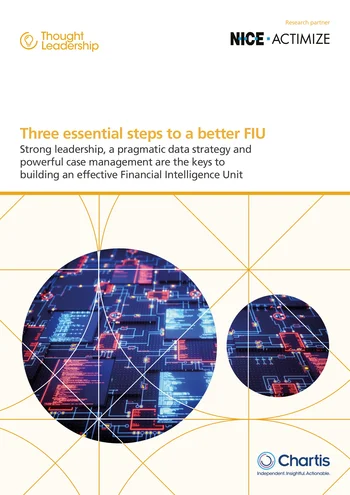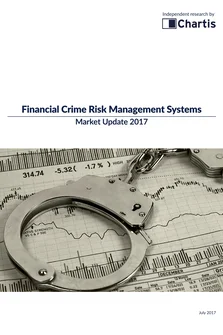<p>Financial Institutions (FIs) face an anxious and uncertain future, as they wait for criminals to strike and regulators to descend. Nor can they ignore digital developments, because their customers demand them and criminals exploit them. But tackling these problems requires huge amounts of data, vast numbers of employees to process it, and big costs.</p>
<p>New ‘entity risk’ approaches promise to surmount the problem of organizational and geographic ‘silos’ inherent in monitoring transaction risk, enabling FIs to build three-dimensional pictures of risky entities. Automation can help to reduce employee costs, particularly within a centralized system.</p>
<p>Financial Intelligence Units (FIUs), which offer a way to centralize and automate, are already proving popular with FIs. But there are many definitions and types of FIU, and each FI will have its own idea of what constitutes a successful unit.</p>
<p>New research by Chartis and NICE Actimize pinpoints an effective starting point – to view the FIU as a technology infrastructure with three essential elements: strong, clear leadership, a pragmatic data strategy, and powerful case management. While developing a truly effective FIU is a long, complex process, by starting with these three essentials FIs can transform the FIU into a valuable resource in financial crime risk management and protection.</p>
Only users who have a paid subscription or are part of a corporate subscription are able to print or copy content.
To access these options, along with all other subscription benefits, please contact info@chartis-research.com or view our subscription options here: https://www.chartis-research.com/static/become-a-member
You are currently unable to print this content. Please contact info@chartis-research.com to find out more.
You are currently unable to copy this content. Please contact info@chartis-research.com to find out more.
Copyright Infopro Digital Limited. All rights reserved.
As outlined in our terms and conditions, https://www.infopro-digital.com/terms-and-conditions/subscriptions/ (point 2.4), printing is limited to a single copy.
If you would like to purchase additional rights please email info@chartis-research.com
Copyright Infopro Digital Limited. All rights reserved.
You may share this content using our article tools. As outlined in our terms and conditions, https://www.infopro-digital.com/terms-and-conditions/subscriptions/ (clause 2.4), an Authorised User may only make one copy of the materials for their own personal use. You must also comply with the restrictions in clause 2.5.
If you would like to purchase additional rights please email info@chartis-research.com






